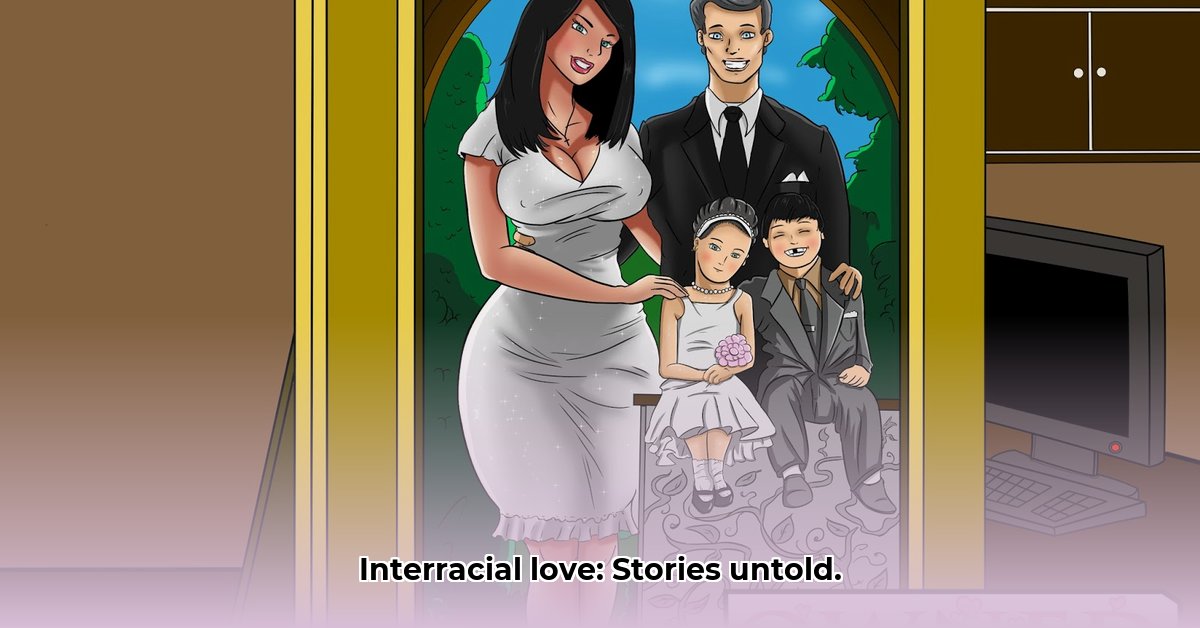
Portraying Interracial Couples Authentically in Illustrations
Illustrations hold immense power in shaping perceptions. When depicting interracial couples, it's crucial to move beyond stereotypes and offer accurate, respectful representations. Failing to do so can perpetuate harmful biases and limit understanding. This article explores the responsible approach to illustrating interracial relationships, focusing on ethical considerations and best practices. We will delve into avoiding harmful clichés, fostering authenticity, and creating impactful visuals that promote inclusivity. This involves examining the nuances of cultural representation and the importance of diverse perspectives.
Beyond Superficiality: Avoiding Stereotypical Portrayals
Images strongly influence how we perceive the world. Illustrating interracial couples necessitates a conscious effort to avoid oversimplified representations that reinforce harmful stereotypes. Dr. Anya Sharma, Professor of Sociology at the University of California, Berkeley, emphasizes, "Illustrations should reflect the diverse realities of interracial relationships, avoiding tropes that reduce individuals to their ethnicity." Instead of relying on tired clichés, we should strive for authentic portrayals that capture the unique complexities of individual relationships. This requires careful consideration of the cultural contexts of the individuals depicted, ensuring their representation is both respectful and nuanced.
How can we ensure our illustrations avoid perpetuating harmful stereotypes, instead reflecting the genuine diversity of interracial relationships? What strategies can be employed to move beyond superficial representations and towards genuine authenticity in visual storytelling? The importance of accurate depiction cannot be overstated.
The Importance of Authentic and Inclusive Depictions
Authenticity is paramount in illustrating interracial couples. The goal is not to merely check off a box representing diversity. Instead, the aim is creating relatable characters with unique personalities and backgrounds where race is simply one aspect of their identity, not the defining feature. This requires deep research and consultation with individuals within interracial relationships. Professor David Chen, an expert in visual communication at Stanford University, notes, "The key to successful illustration is not just the inclusion of various ethnicities, but also the authentic portrayal of their lived experiences." The illustration should reflect the complexities of modern relationships and move away from unrealistic or simplistic stereotypes.
What are the key elements of creating realistic and relatable representations of interracial couples in illustrations, and how can these elements be effectively integrated into the creative process? How can we make sure illustrations avoid oversimplification and superficial representation?
Creating Ethical Illustrations: A Practical Guide
Creating ethical illustrations of interracial relationships requires a meticulous, multi-step approach:
- Thorough Research: Conduct extensive research to understand diverse cultural perspectives and backgrounds, going beyond superficial knowledge to grasp the nuances of different identities.
- Engage with Experts: Consult individuals in interracial relationships, incorporating their lived experiences and perspectives to ensure authenticity and accuracy in the portrayal. Their insights are invaluable in crafting realistic and sensitive representation.
- Prioritize Authenticity: Focus on creating realistic portrayals that avoid idealized or stereotyped images, highlighting the variety of these relationships and avoiding harmful tropes.
- Integrate Diverse Perspectives: Present various viewpoints and experiences to ensure inclusivity and avoid a singular or narrow perspective. This is crucial for a comprehensive and honest portrayal.
- Illustrate the Nuances: Represent both the joyful and challenging aspects of relationships, acknowledging that all relationships experience complexities and difficulties. Honesty requires reflecting this full spectrum of experiences.
These five steps provide a framework for creating responsible and impactful illustrations of interracial relationships. Their implementation ensures that the illustrations are both ethically sound and visually engaging.
The Broader Impact: Visual Storytelling and Social Responsibility
Illustrations wield significant influence in shaping public opinion. The narratives they convey can significantly impact how society perceives interracial relationships. By creating accurate and inclusive illustrations, we promote empathy, understanding, and acceptance. Conversely, neglecting this responsibility can perpetuate harmful biases and stereotypes. Therefore, visual storytelling in this context demands a commitment to ethical representation and social responsibility. Illustrations have the power to build bridges or reinforce divisions; let's choose wisely.
How can we leverage the power of illustration to promote positive social change and foster greater understanding and acceptance of interracial relationships? What is the ethical responsibility of illustrators when depicting diverse groups in visual media?
Moving Forward: Responsibility and Continued Growth
Creating responsible illustrations of interracial relationships is an ongoing process of learning and refinement. It requires not only the avoidance of harm, but also the active promotion of understanding and celebration of human connection. This necessitates thoughtful reflection, ongoing dialogue, and the cultivation of ethical awareness. The potential benefits of responsible illustration far outweigh the risks of perpetuating harmful biases. Let’s leverage the power of illustration as a tool for connection and understanding, creating a future where visual media reflects the genuine beauty and complexity of human relationships.
What are some challenges that illustrators might face when attempting to create ethical and inclusive illustrations, and how can these challenges be effectively addressed through ongoing research, education, and collaboration? What strategies can be employed to continuously improve the accuracy and inclusivity of representations in future illustrations?